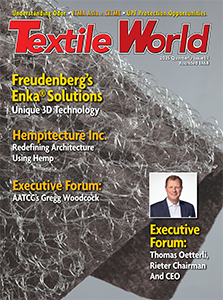Welcome! Log into your account
Recover your password
- Home
- News
- Departments
- Issues
- Digital Issues
- Associations
- American Apparel & Footwear Association (AAFA)
- Americas Apparel Producers’ Network (AAPN)
- The Association of Italian Textile Machinery Manufacturers (ACIMIT)
- American Association of Textile Chemists & Colorists (AATCC)
- Advanced Textiles Association (ATA)
- British Textile Machinery Association (BTMA)
- Association of the Nonwoven Fabrics Industry (INDA)
- Institute for Supply Management® (ISM®)
- International Textile Manufacturers Federation (ITMF)
- National Council of Textile Organizations (NCTO)
- National Retail Federation (NRF)
- The Nonwovens Institute (NWI)
- The Plastics Industry Association (PLASTICS)
- SEAMS — The Association & Voice of the U.S. Sewn Products Industry
- Sewn Products Equipment and Suppliers of the Americas (SPESA)
- Southern Textile Association (STA)
- Swiss Textile Machinery Association (Swissmem)
- Synthetic Yarn & Fabric Association (SYFA)
- Swedish Textile Machinery Association (TMAS)
- UCMTF – French Textile Machinery Manufacturers Association
- VDMA Textile Machinery – German Textile Machinery Association
- Show Information
- Events Calendar
- Photo Galleries
- Subscribe
- Contact
© Copyright 2017 Textile Industries Media Group, LLC.




